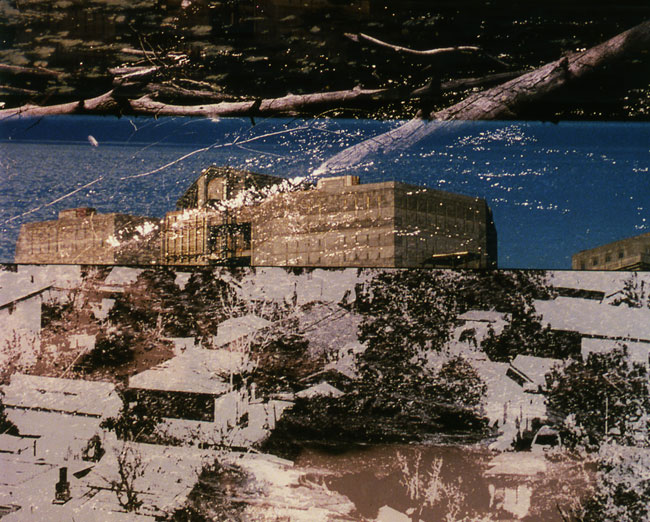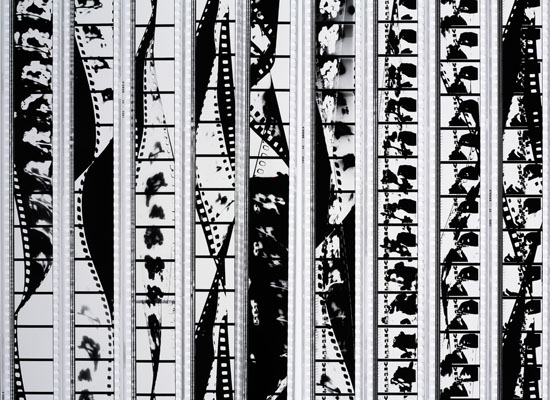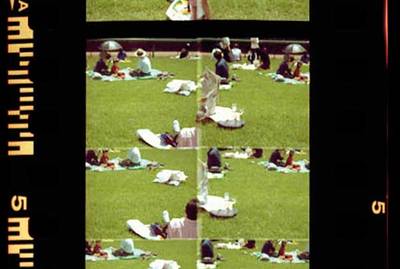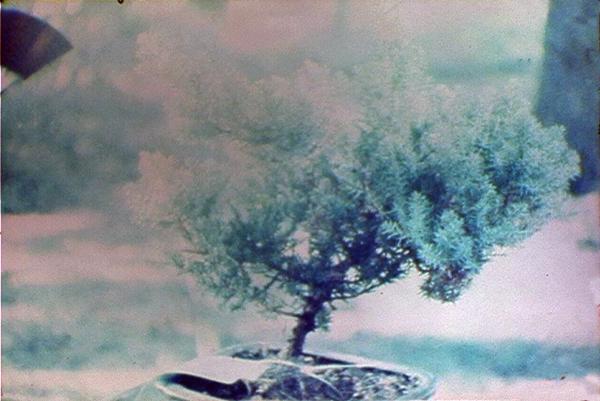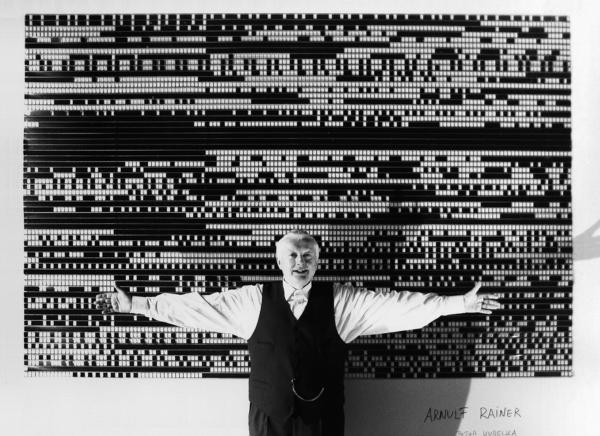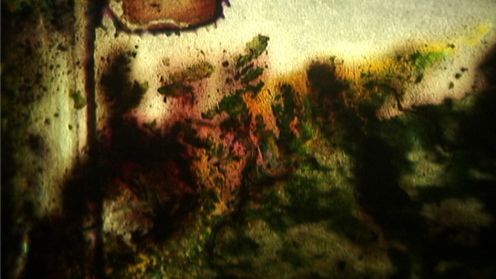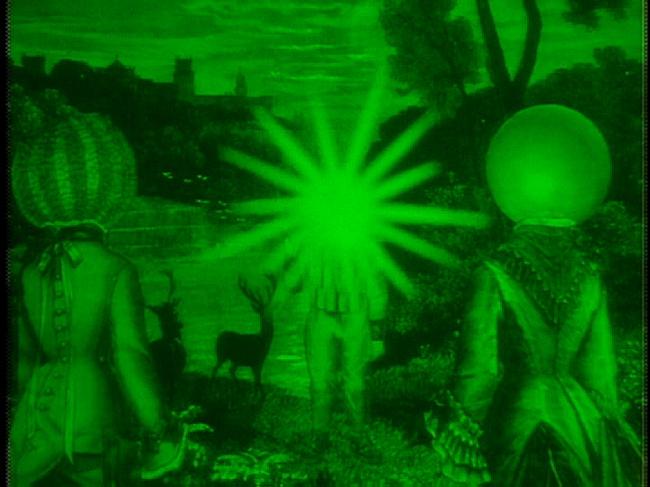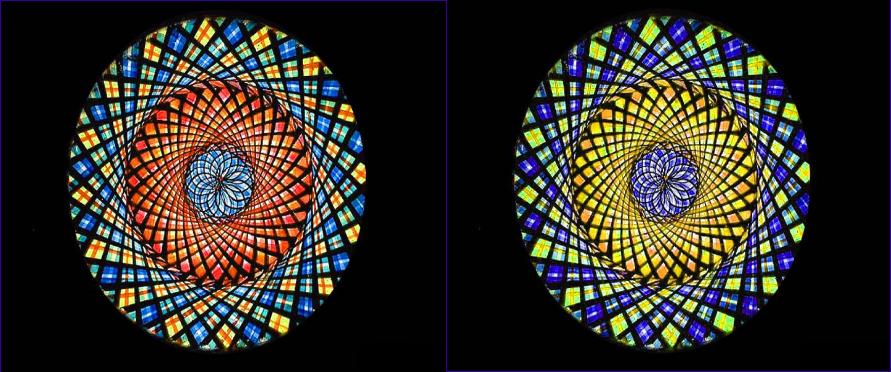Experimental Response Cinema is excited to partner with the Alamo Drafthouse Ritz to present a rare screening of classic and contemporary experimental works made on that now-classic format of 35mm film!
Cabinets, windows and frames of reveries, hand-painted epics, radically reshaped and vital emulsions, and explorations of the primal elements of the medium are some of the themes that come forward in this diverse program. Featuring work by Christina Battle, Louise Bourque, Stan Brakhage, Siegfried A. Fruhauf, Lawrence Jordan, Chris Kennedy, Peter Kubelka, Kerry Laitala, Pat O’Neill, and Peter Tscherkassky. Programmed by Ekrem Serdar.
Event Details
Saturday, June 1st, 2013
1pm
Alamo Drafthouse Ritz (map)
$10 / ERC Pass
Buy tickets here
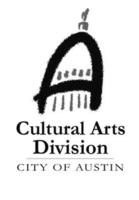 This project is funded and supported in part by the City of Austin through the Economic Growth & Redevelopment Services Office/Cultural Arts Division believing an investment in the Arts is an investment in Austin’s future. Visit Austin at NowPlayingAustin.com.
This project is funded and supported in part by the City of Austin through the Economic Growth & Redevelopment Services Office/Cultural Arts Division believing an investment in the Arts is an investment in Austin’s future. Visit Austin at NowPlayingAustin.com.
Program
Conjuror’s Box by Kerry Laitala
5min / 35mm / silent / 2011
“Conjuror’s Box”, the latest work in the “Muse of Cinema series”, was made using several D.I.Y. collage techniques including: CINEGRAMMING, hand-painting, and the re-animation of magic lantern slides. “Conjuror’s Box” takes the viewer through the looking glass, to immerse them in a fiery pane of hand-painted wonders. “Conjuror’s Box” summons forth primordial images of beauty from the hand painted imagery to images of transformation, metamorphosis, and chimera to literary and even ancient, biblical references. The fiery hole becomes a mirror fusion of past and future deaths.
“Mene mene tekel upharsin”: (“The hand writing on the wall” ) is written on one of the magic lantern slides:
This idiomatic expression was used as a portent alluding to the demise of 35mm film. As “Conjuror’s Box” was made and finished on celluloid material, “Conjuror’s Box” is a harbinger of doom for the flickering material. Upon starting this film in 2006, it was less apparent that the loss of celluloid would occur quite as rapid as time has proven that it would occur. This film is in effect a memento mori to the celluloid medium.
“Conjuror’s Box” was awarded the Director’s Choice Award from The Black Maria Film Festival, Jersey City, New Jersey
Our Lady of the Sphere by Lawrence Jordan
10min / 35mm / sound / 1969
Animation. The mystical Lady with the orbital head moves through the carnival of life in a Surreal Adventure. A classic. Show it to anyone who likes movies.
“A beauty … a genuinely mystical exercise.” – Howard Thompson, The New York Times
“OUR LADY OF THE SPHERE – perhaps Jordan’s most exquisitely perfect creation – is a color collage of roccoco imagery juxtaposed with symbols of the space age. The images metamorphose, transmute, interpenetrate and otherwise change with the fluid effervescence of bubbles rising out of water, punctuated by sudden flashes of light, alarm buzzers and abrupt visual surprises. It is a mystical, jewel-like creation, like a Joseph Cornell box come to life.” – Thomas Albright, San Francisco Chronicle
“A sense of mystery and adventure. Jordan is in his own distinct way a magician.” – Donald Miller, Pittsburgh Post-Gazette
Arnulf Rainer by Peter Kubelka
7min / 35mm / sound / 1960
“He has even created a film (called ARNULF RAINER) whose images can no more be ‘turned off’ by the closing of eyes than can the soundtrack thereof it (for it is composed entirely of white frame rhythming thru black inter-spaces and of such an intensity as to create its pattern straight thru closed eyelids) so that the whole ‘mix’ of the audio-visual experience is clearly ‘in the head,’ so to speak: and if one looks at it openly, one can see one’s own eye cells as if projected onto the screen and can watch one’s optic physiology activated by the sound track in what is, surely, the most basic Dance of Life of all (for the sounds of the film do resemble and, thus, prompt the inner-ear’s hearing of its own pulse output at intake of sound).
“These films must, very truly, be seen and very truly seen and heard to be believed!” – Stan Brakhage
Three Hours, Fifteen Minutes Before the Hurricane by Christina Battle
5min / 35mm / silent / 2006
Inspired by the diorama-like boxes of Joseph Cornell, and with text taken from victims of hurricane Katrina, “three hours, fifteen minutes before the hurricane struck” imagines moments just before a violent weather storm.
“three hours, fifteen minutes before the hurricane struck” is part of a larger project titled “weather series one (hurricanes)”, a mixed-media installation with works on paper, film, video and small objects.
Made with the support of LIFT & the New Directions in Cinema Series, 2006.
Jours en Fleurs by Louise Bourque
4:30min / 35mm / sound / 2003
“Jours en fleurs” is a reclamation of flower-power in which images of trees in springtime bloom are subjected to the floriferous ravages of menarcheal substance in a gestation of decay. The title is based on an expression from my coming-of-age in Acadian French Canada where girls would refer to having their menstrual periods as “être dans ses fleurs.” As a result of incubation in menstrual blood for several months, the original images inscribed on the emulsion undergo violent alterations. The shedding of the unfertilized womb depredates the fertilized blossoms and substitutes its own dark beauty. – LB
“Those few shorts that attempt something different become standouts […], such as Louise Bourque’s glittering neo-feminist abstraction ‘Jours en Fleurs.’” – Ed Halter, The Village Voice, New York, November 19 – 25, 2003
“I can recommend two must-sees in this year’s Perspective Canada [series at the Toronto International Film Festival]. Louise Bourque’s short ‘Jours en fleurs’ is an abstract series of lapping visuals that finds limitless colour and texture in a degraded image.” – Cameron Bailey, Now Magazine, Toronto, September 4, 2003
16-18-4 by Tomonari Nishikawa
2.5min / 35mm / silent / 2008
This film was shot by a still camera with 16 lenses, which takes a series of 16 pictures within 1.5 seconds, fitting onto 2 normal frame areas.
The film shows the sense of the event at Tokyo Racecourse, when it was holding the biggest race of the year, Japanese Derby (Tokyo Yushun). The excitement of each race lasts 2 minutes and 30 seconds.
REALTIME by Siegfried A. Fruhauf
5min / 35mm / sound / 2002
All that film is can be reduced to two elements: light and (proportionately structured) movement. And there are many possible answers to the question of what light and proportionate movement are. In Realtime, Siegfried Fruhauf has decided on the most simple one, summing it up in the most symbolically unequivocal and, literally, most illuminating way: the sun. The light of the sun is the only type of lighting used to illuminate the movie screen in Realtime. And the sunrise, filmed in realtime, is the only discernible motion – which makes us realize that all motion, in film and in the cosmos, is temporal. Everything else about film is negotiable, such as the fuzzy area between (justified) expectation and (actual) fulfillment, which is known as suspense. After the moving electric arc on the screen has been revealed to be a heavenly body, we have every reason to believe that it will continue its forward motion in an absolutely constant orbit. At the same time, we eagerly ask at which point (and/or through which points) the filmmaker will remove his gaze from it. Or the soundtrack, which also represents an arbitrary matter, and which is called music in the most arbitrary of cases. The irreversible movement of Fruhauf’s protagonist is accompanied by the groove of a playfully altered pop song – the absolute meter is subordinated to a moment of subjective duration. Realtime returns the possibilities available to film to their absolute zero – and provides a clever hint at what can be reimagined proceeding from this point (and on to eternity). (Robert Buchschwenter) Translation: Steve Wilder
Dream Work (for Man Ray) by Peter Tscherkassky
11min / 35mm / sound / 2001
A woman goes to bed, falls asleep, and begins to dream. This dream takes her to a landscape of light and shadow, evoked in a form only possible through classic cinematography.
“Dream Work” is – after “L’Arrivée” and “Outer Space” – the third section of my CinemaScope Trilogy. The formal element binding the trilogy is the specific technique of contact printing, by which found film footage is copied by hand and frame by frame onto unexposed film stock. Through this, I am able, in a literal sense, to realize the central mechanism by which dreams produce meaning, the “dream work,” as Sigmund Freud described it: displacement [Verschiebung] and condensation [Verdichtung]. The new interpertation of the text of the original source material takes place through its “displacement” from its original context and its concurrent “condensation” by means of multiple exposure.
Moreover “Dream Work” positions itself as an hommage to Man Ray, who, in 1923 with his famous rayographs in “La retour á la raison” was the first artist to use this technique for filmmaking, exposing the image by shining light through physical objects onto the film stock.
Jane’s Window by Chris Kennedy
11min / 35mm / silent / 2005
“My grandmother cherished her large dining room window for the opening it afforded her onto the world. From this perspective she would espy the arrival of friends and family, contemplate the change of seasons and reflect on time past. On the shelves of this window she collected mementos of a childhood in China, life as an artist, and the travels in between. Combining images of my own travels through Japan and China with images of the home my grandparents built, ‘Jane’s Window’ reflects on the passing down of memory, curiosity and creativity across generations.” (CK)
The Dante Quartet by Stan Brakhage
8min / 35mm / silent / 1987
This hand-painted work six years in-the-making (37 in the studying of The Divine Comedy) demonstrates the earthly conditions of “Hell,” “Purgatory” (or Transition) and “Heaven” (or “existence is song,” which is the closest I’d presume upon heaven from my experience) as well as the mainspring of/from “Hell” (HELL SPIT FLEXION) in four parts which are inspired by the closed-eye or hypnagogic vision created by those emotional states. Originally painted on IMAX and Cinemascope 70mm and 35mm, these paint-laden rolls have been carefully rephotographed and translated to 35mm and 16mm compilations by Dan Yanosky of Western Cine. – SB
Horizontal Boundaries by Pat O’Neill
23min / 35mm / sound / 2008
The title Horizontal Boundaries refers to frame lines- the boundaries between one image and the next on a roll of motion picture film. These lines, usually hidden by the projector gate, are revealed as subject matter and as a means of dividing the screen into as many as four very wide images, stacked one above the other. They represent many places, and a few people. My intent was to find ways to allow the images to interact in ways not usually possible. The track includes some Irish fiddle solos and intense recycled dialog.
